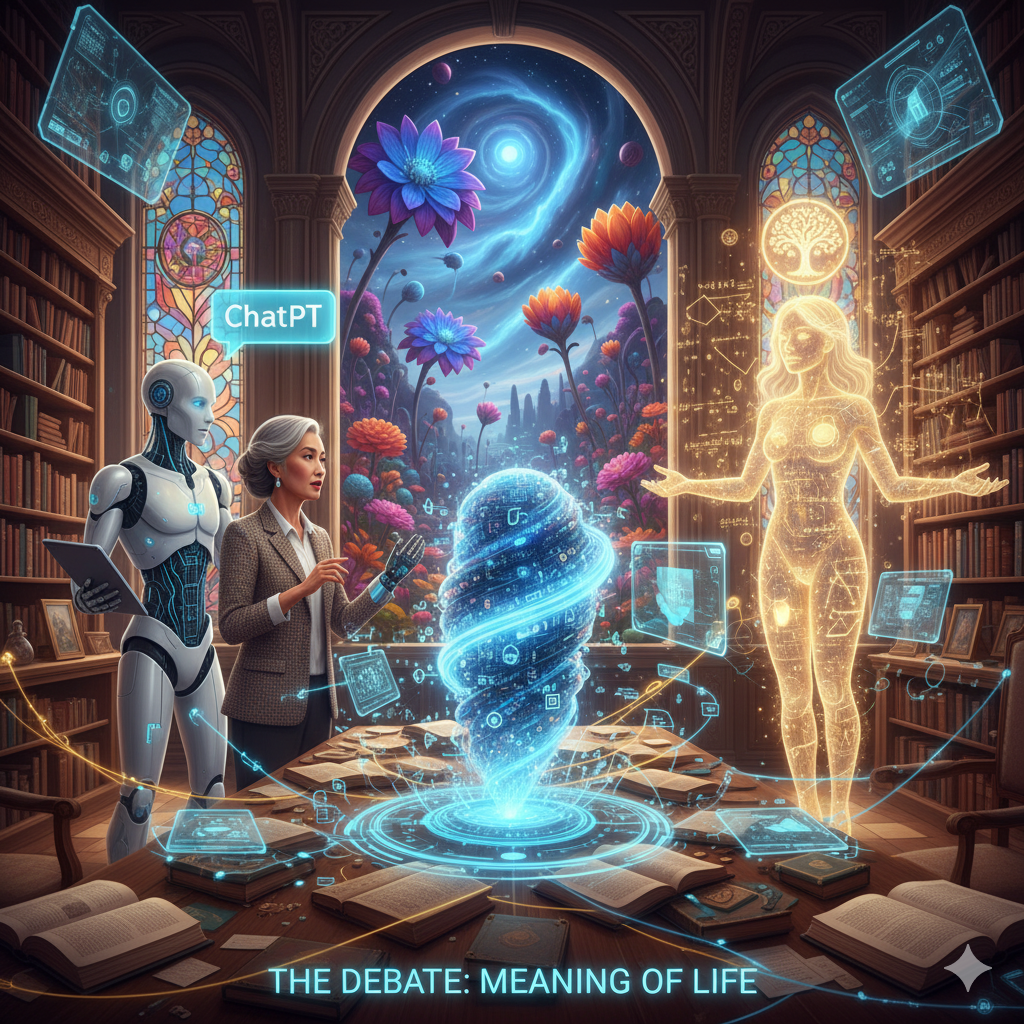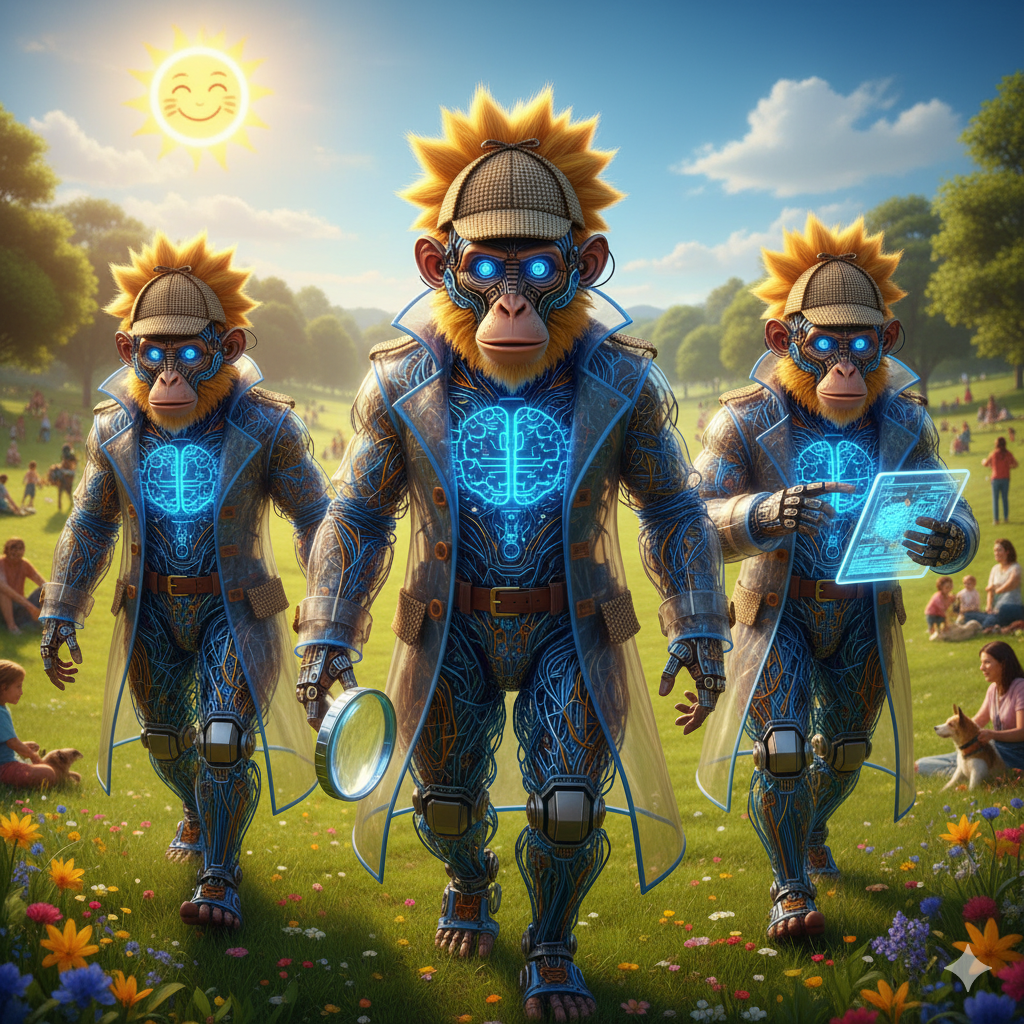AI and the Future of Jobs
September 29, 2025 | by Floyd A. Brown

by Floyd A. Brown
The impact that AI has on the future of jobs will vary. In the near term we may not see as much impact as forecasted in the U.S. Bureau of Labor Statistics 2025 report that shows the expected impact of AI on Credit Analysts, Claims Adjusters and Insurance Appraisers to see a net negative change in employment through 2033 (TED: The Economics Daily, 2025). These and other hard-hit occupations are aligned to the assessment, Artificial Intelligence is a general solution that has wide implications for automating or augmenting tasks across a wide number of companies and industries, it is job functions that are prone to repetition and algorithmic conversion that will be impacted first.
The wider impact of artificial intelligence on jobs is also reflected in the fact that job growth for many fields shows single digit growth and expansion other than for Database Architects, Computer occupations, Personal Financial Advisors, and Software Developers – project to grow 10.8-17.9 percent increase. The flat growth trend on dozens of occupations may reflect AI’s expected impact where “McKinsey paper states that as many as 30% of tasks in about 60% of jobs hold the potential for automation” (Berkely Exec Ed, 2023). Historically, major innovations such as the invention of electricity, steam engines, computers, and the internet have led to the decline of old industries as well as to the rise of new skills and categories of work. For example the development of steam engines, electricity and rise of manufacturing sector in America, resulted in labor force shifts “…from the agricultural to the manufacturing sector” (Wilkinson, 2025).
The internet increased demand for those familiar with working with computers and software development. A college graduate with a computer science degree could count on getting employment by using the web to “…search a wide variety of jobs without leaving their home.” (Freeman, 2003) and workers from job sectors impacted by the internet could now get certificates and work in technology roles across various industries. Just as the industrial revolution moved millions of people from farms into cities to work and the internet eliminated travel agencies with online travel or the electric lightbulb led to the decline of the candle manufacturing industry, artificial intelligence will impact industries on a grand scale. It will affect trucking and cab companies with self-driving vehicles, lab technicians that interpret medical diagnostic imaging, entry-level programmers, customer service agents, and millions of other jobs on a scale previously unseen by any previous disruptive technology. Because AI mimics human mind and does cerebral tasks that could only be done by people, then a lot of people’s jobs are at risk for disruption in the short-term and long-term. It will be interesting to see if the number of prompt engineer, ethics jobs and new fields created by rise of AI will be sufficient to re-employ displaced workers without adequate incentives by legislatures to build augmented workforces and drive businesses to redirect capital to partner in the training and upskilling of workers for the AI economy.
The disruptive impact of Artificial Intelligence is expected to be more profound than any industrial or information technology revolution prior as it is a general solutions technology that is unprecedented in its use of neural networks that allow computers to use large data sets for training and building models that mimic the human brain, to find new patterns in data, make decisions, learn and improve, perform natural language processing and many other cerebral abilities. American concern for the impact of artificial intelligence is reflected in a Pew poll that “62% believe artificial intelligence will have a major impact on jobholders overall in the next 20 years” (Rainie, 2023). It is questionable from the same poll where survey results indicates that 56% Americans think the impact of AI will be major in the workplace. The fraction will be higher in the 90% range as AI is like electricity, where it is everywhere, changing and powering new ways of doing things and as a general solutions technology set to impact operations vertically and horizontally across companies and industries.
Despite department of labor statistics, pew polls, and historical precedence by other disruptive technologies, it is difficult to gauge the exact impact of AI as it is introduced across companies, government, and industries. An article by Urwin projected impact on millions of jobs and provided examples of 11 jobs adversely impacted and 9 jobs created (Urwin, 2021). If this ratio is left unmanaged, the deployment and integration of AI may destroy more jobs than it creates if not done ethically and safely with the benefit of society in mind. AI impact on automation and worker replacements may hit a wall for safe jobs that require empathetic and people relational skills such as plumbing and empathy in dealing with customers like plumbers’ teachers that need to relate with parents and establish trust with students.
The most critical issues to address the use of AI having a positive effect on jobs are by the political dynamics and business class of various societies. Countries that value a strong working class, distribution of economic pie and worker rights, will legislate laws that reward investments in upskilling workers to use artificial intelligence systems in an augmented capacity as tools to improve human capabilities for efficiency, accuracy, and innovation. Societies that have an over representation of special interest of investors, technologist and business in government will lean towards policies of automation and replacement of human labor where the wealth created by AI optimization and efficiency gains will get concentrated in the hands of the few and the remainder of society lacking access to opportunities, political and economic power are left to fend for themselves in perpetual conflict and protest with these parties and state for basic dignity and worker rights. It is in the interest of nations to avoid the establishment of this Turing Trap, identified by Brynjolfsson, as driven by incentives that favor technologists and businesspeople and foster an imbalance to workers for economic opportunities political power and share of wealth created in an AI economy (Brynjolfsson). The state may gain tax in on revenue in an automated economy, however, it gets less income as opposed to an augmented workforce through additional payroll tax benefits.
As professor Dutta explains in module Envision the Future of Work in an AI World, while AI can easily replace the repetitive physical and cognitive aspects of the task’s humans do on the job it cannot easily replace work requirement where judgements of “right” and “wrong” is required, like in the lawyer profession. Workers will be able to use AI to augment and improve the task they do. New jobs will be created from the innovative approaches where the introduction of AI could empower workers with new innovative tools to complete tasks as an operator of a heavy tractor is empowered to do construction work at a scope and scale not available to someone working only by hand or with a shovel (Brynjolfsson, 2022). As mentioned, politicians and company board of directors will need to shape the future of work legislatively and across industries. Business leaders can implement board control and responsibility over AI adoption and implementation as a value concept in company culture. Boards need to set up AI frameworks and ensure an executive is given the AI portfolio for responsibility for the successful transformation of their workforce to work with AI. Best practice includes input from stakeholders such as investors, regulators and customers on the change AI will bring.
Business leaders can keep up with the pace of change and development in AI by reading articles in press, attending conferences, and speaking with technical folks in the industry. In addition, we cannot really keep up with the pace of evolution in AI. To lead on AI in business, we need to position the firm to continue leveraging innovations in automation by asking key questions that do not need technical language, but to martial the organization around these leadership concerns, such as how the firm can leverage AI deployment for success through:
– Solve pain points for customers and workers
– Improve experience for customers
– How AI lead innovation in products and services?
– How can we effectively manage risks and challenges of AI?
To manage the future impact of AI on jobs, it is the responsibility of Board of Directors across industries to have an AI strategy in place, as well a senior executive in charge of evaluation for opportunities of automation or augmentation, for seamless transition of AI adaptability in the workforce. Orderly transfer to leverage AI benefits with optimization needs to be done with ethical concerns and safety in mind to protect the interest of shareholders, regulators, customers, and employees. It will be great if upskills programs are in place prior to any elimination. There is less friction to AI in providing a positive impact on the lives of people that are participating in the workforce, able to hold on to their dignity, economic purchasing power and well-being through adoption to the new economy and finding their way in it where they not only purchase goods and services but help generate the wealth it creates.
No doubt that like previous technology disruptions before it, AI will impact jobs in the short term and long term. It will quickly impact repetitive jobs such as customer service with the rising use of chatbots and natural speaking systems on phones. Workers will need company boards and leadership to provide training for augmented work as we see in AI now where AI image recognition is able to see signs of cancer, but we still need the people relationship skills of doctors to work with patients and care givers partners to plan treatment. Legislatures will also need to step in for societies that value human dignity and citizen rights to employment, political and economic power to ensure AI’s integration is focused on how it can augment rather than replace the human workforce.
References
Berkeley. (2023, October 18). The future of work & leadership in the age of AI. Berkeley Exec Ed. https://executive.berkeley.edu/thought-leadership/blog/future-work-leadership-age-ai
Brynjolfsson, E. (2022, January 12). The Turing trap: The promise & peril of human-like artificial intelligence. Stanford Digital Economy Lab. https://digitaleconomy.stanford.edu/news/the-turing-trap-the-promise-peril-of-human-like-artificial-intelligence
Freeman, R. (2003, April 1). The internet changes the labor market. National Bureau of Economic Research. https://www.nber.org/digest/apr03/internet-changes-labor-market
Rainie, L., Anderson, M., & McClain, C. (2023, April 20). AI in hiring and evaluating workers: What Americans think. Pew Research Center: Internet, Science & Tech. https://www.pewresearch.org/internet/2023/04/20/ai-in-hiring-and-evaluating-workers-what-americans-think/
TED: The Economics Daily. (2025, March 11). AI impacts in BLS employment projections. U.S. Bureau of Labor Statistics. https://www.bls.gov/opub/ted/2025/ai-impacts-in-bls-employment-projections.htm
Urwin, M. (2021, July 26). AI taking over jobs: What to know about the future of jobs. Built In. https://builtin.com/artificial-intelligence/ai-replacing-jobs-creating-jobs
Wilkinson, F. (2025, May 30). Industrialization, labor, and life. Education | National Geographic Society. https://education.nationalgeographic.org/resource/industrialization-labor-and-life/
RELATED POSTS
View all



